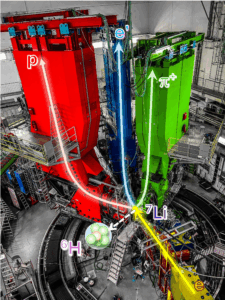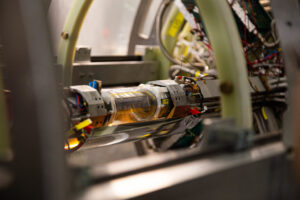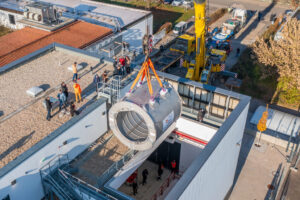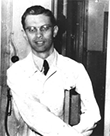New method to produce an extremely heavy hydrogen isotope at the Mainz Microtron accelerator MAMI
Production and measurement of the extremely neutron-rich hydrogen isotope ⁶H achieved for the first time in an electron scattering experiment / Result shows stronger than expected interaction between neutrons within the nucleus
30 April 2025

The A1 collaboration at the Institute for Nuclear Physics at Johannes Gutenberg University Mainz, together with scientists from China and Japan, has for the first time successfully produced one of the most neutron-rich isotopes, hydrogen-6, in an electron scattering experiment. The experiment at the spectrometer facility at the Mainz Microtron (MAMI) particle accelerator presents a new method for investigating light, neutron-rich nuclei and challenges our current understanding of multi-nucleon interactions. “This measurement could only be carried out thanks to the unique combination of the excellent quality of the MAMI electron beam and the three high-resolution spectrometers of the A1 collaboration,” comments Prof. Dr. Josef Pochodzalla from the Institute for Nuclear Physics. Researchers from Fudan University in Shanghai (China), Tohoku University Sendai, and the University of Tokyo (both Japan) were involved in the experiment. The experimental work was led by doctoral student Tianhao Shao and has been published in the renowned journal Physical Review Letters.

 We congratulate Dr. Sebastian Stengel on the successful completion of his dissertation entitled “
We congratulate Dr. Sebastian Stengel on the successful completion of his dissertation entitled “
 We congratulate Dr. Viacheslav Tsaran on completing his dissertation entitled
We congratulate Dr. Viacheslav Tsaran on completing his dissertation entitled
 We congratulate Marius Köppel on the completed dissertation entitled
We congratulate Marius Köppel on the completed dissertation entitled
 strangeness in neutron stars.
strangeness in neutron stars. Francesca Bonaiti from the group of Sonia Bacca stands out as one of the top physics PhD students at JGU. Consistently achieving exceptional results in her theoretical research, she has published several papers in peer-reviewed journals. Recognized for her strong potential, she also has collected several invitations to international conferences and has recently secured the prestigious 5-year FRIB theory fellow position in the USA.
Francesca Bonaiti from the group of Sonia Bacca stands out as one of the top physics PhD students at JGU. Consistently achieving exceptional results in her theoretical research, she has published several papers in peer-reviewed journals. Recognized for her strong potential, she also has collected several invitations to international conferences and has recently secured the prestigious 5-year FRIB theory fellow position in the USA.
